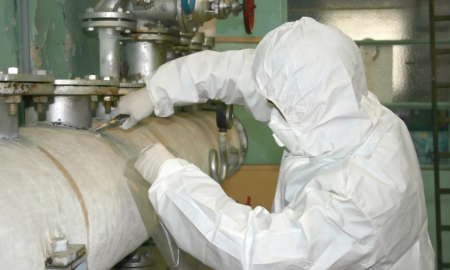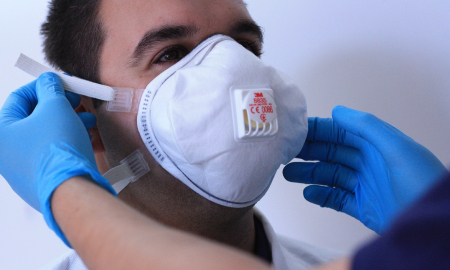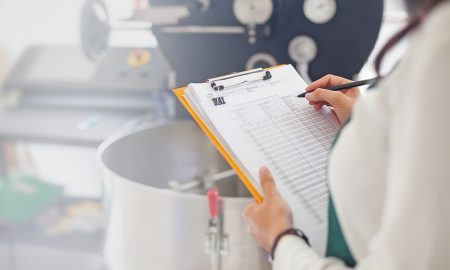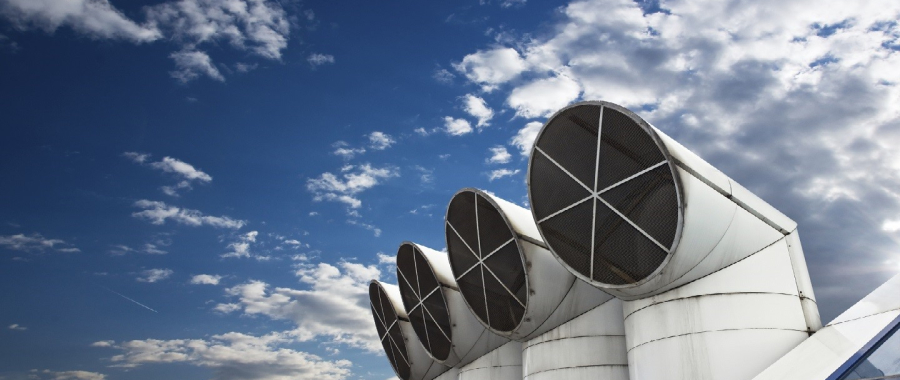LEV From a Technical Perspective
A Local Exhaust Ventilation (LEV) system can help employers effectively control exposure to gas, vapour, dust, fumes and mist generated in the workplace by extracting the contaminant cloud before the workers breathe it in.
An item of plant can be considered to be an LEV system if it controls (by receiving, capturing and/or containing) airborne hazardous substances released at, or close to, the point of emission by means of ventilation. The contaminant cloud is then conveyed to a point where the airborne hazardous substance can be safely collected, filtered and released.
An LEV system should be able to effectively capture fugitive hazardous substances, removing them from the workplace and thereby aiding in hazardous substance exposure control for the workers. Examples of LEV systems include a capture hood placed at the source of welding to remove the fumes, an enclosed down-draught booth to remove mist when spray-painting vehicles, or a receptor hood placed at the back of an angle grinder to remove the metal dust generated.
The importance of TExT
LEV systems must be routinely examined and checked in accordance with HS(G)258 ‘Controlling of Airborne Contaminants at Work – A Guide to LEV’. As well as ensuring that basic daily, weekly and monthly checks are performed on LEV, COSHH regulation 9 ‘Maintenance, examination and testing of control measures’ requires that LEV systems are Thoroughly Examined and Tested (TExT) at least once every 14 months, or more frequently if the LEV plant is used in conjunction with a process specified in Column 1 of Schedule 4 of the COSHH regulations. The aim of the routine TExT is to ensure that LEV systems intended to control exposure to substances that are hazardous to health continue to operate as originally intended, controlling the exposure of harmful substances to workers.
TExT must be carried out by a competent individual who has adequate knowledge, training and expertise in the examination methods and techniques. This could be an occupational hygienist or LEV consultant who has ideally passed the P601 course or undergone other relevant internal training, holds the BOHS Certificate of Operational Competence and/or is ILEVE accredited. LEV TExT will encompass: undertaking a thorough visual and structural examination to verify the LEV is in efficient working order, in good repair and in a clean condition; a review of performance criteria and available documentation; an assessment of control effectiveness, which is performed by a combination of any of the following, dependent on system specifications:
- The use of a rotating vane anemometer to measure face velocities
- The use of a hot wire anemometer to measure face or capture velocities
- The use of a manometer and pitot assembly for measuring system pressures and duct transport velocities
- The use of smoke generator tubes to give a visual indication of air currents and the dispersion of contaminant clouds such as gases or vapours
- The use of a Tyndall Beam lamp to highlight airborne particulates and visualise the air flow into the extraction system
Taking measurements
The measurement of air velocity into the hoods (face velocity) or at the work position/point of release (capture velocity) indicates whether the airborne pollutant is likely to be extracting the contaminant cloud into the LEV system sufficiently. Meanwhile, the measurement of duct transport velocity will enable the examiner to check whether the system is adequately transporting airborne hazardous substances within the ductwork to the collector/filter, thereby preventing contaminant dropout and subsequent internal blockages. Static pressure readings are also taken to determine any air flow resistance issues and changes to the system’s fan or filter performance.
These measurements provide the examiner with quantitative data in order to formulate a conclusion of the system’s performance. The velocity readings are compared against the system’s commissioning data (if available), guidance figures listing in HS(G)258 or other relevant guidance documents. The condition of the hood, fan, filter and ductwork are also noted and taken into account when formulating a judgment of the LEV system.
Beyond this quantitative data, it is crucial that the examiner observes the process through which the LEV system controls airborne hazardous substances. The use of smoke tubes, Tyndall beams and even the examiner’s own professional judgment when observing the process will allow for a fully comprehensive conclusion to be reached as to whether or not the LEV system is performing as originally intended and adequately controlling the exposure to hazardous substances.
LEVs and the railway
In the rail sector, one may see an LEV system such as the example pictured below. The canopy hood is situated above the road within the maintenance shed on which trains are to be stabled. Exhaust gases from the train’s engines will be received by the hood, which extracts the contaminant cloud away from the workplace.
Exposure control is reliant on good positioning of the train’s exhaust points to the hood’s extraction points. Accordingly, the hood must be designed in a way that ensures it is wide enough to receive the whole of the contaminant cloud and positioned as closely to the exhaust source as possible. In some cases, this may require the addition of sheets or soft panels to hang from the sides of the hood in order to create a more fully encompassing enclosure around the contaminant cloud sources. The LEV designer must also take into account such variables as trains revving (a high energy contaminant cloud) and idling (a low energy contaminant cloud), as this will affect how much power is required by the system’s fan to fully extract the contaminant cloud in either situation.
LEV system inspection
During the inspection, the examiner will look at how the operative is using the LEV system, such as the captor hood’s positioning in relation to the fume source, booth clearance time adherence, powder drop heights while weighing materials, the user’s stance to the extraction point while aerosol spraying and the placement and design of external exhaust point(s).
It is important that the LEV system owner ensures that the inspection process runs as smoothly as possible by granting the examiner full access. This may call for a brief halt in production, as the system may need to be turned off in order to gain access to the fan, filter and internal ducting via inspection hatches. It should also be noted that the LEV system and its associated processes should be fully operational when the examiner is taking observations of working practices, as this is essential in determining the adequacy of the LEV system’s performance.
Ducting ports should ideally also be present in order to allow for internal duct transport velocity readings. If these ports are not already present, then the system owner should drill a hole at specific points, taking advice from the LEV examiner or system manufacturer when doing so. Access to ports at height may also be necessary, meaning suitable provisions and proof of appropriate training may be required. The system owner should also provide the LEV examiner with the system’s commissioning report, user manual, logbook and any previous LEV TExT reports (if available).
To discover more about SOCOTEC’s range of Occupational Hygiene services, click here.





Add new comment